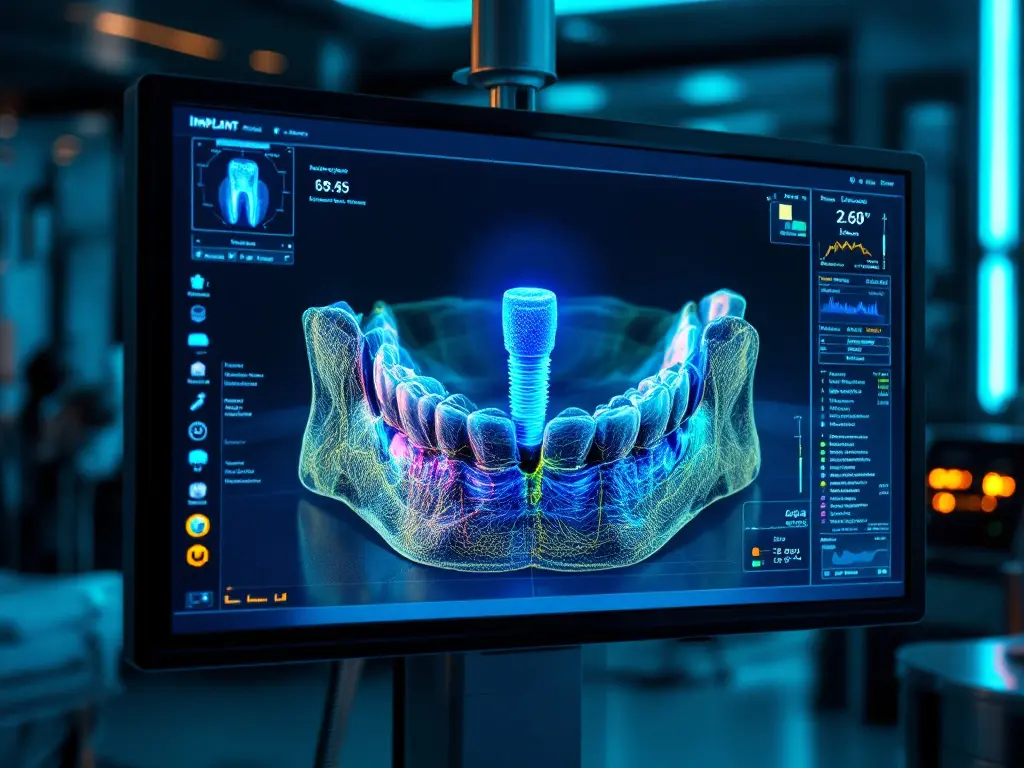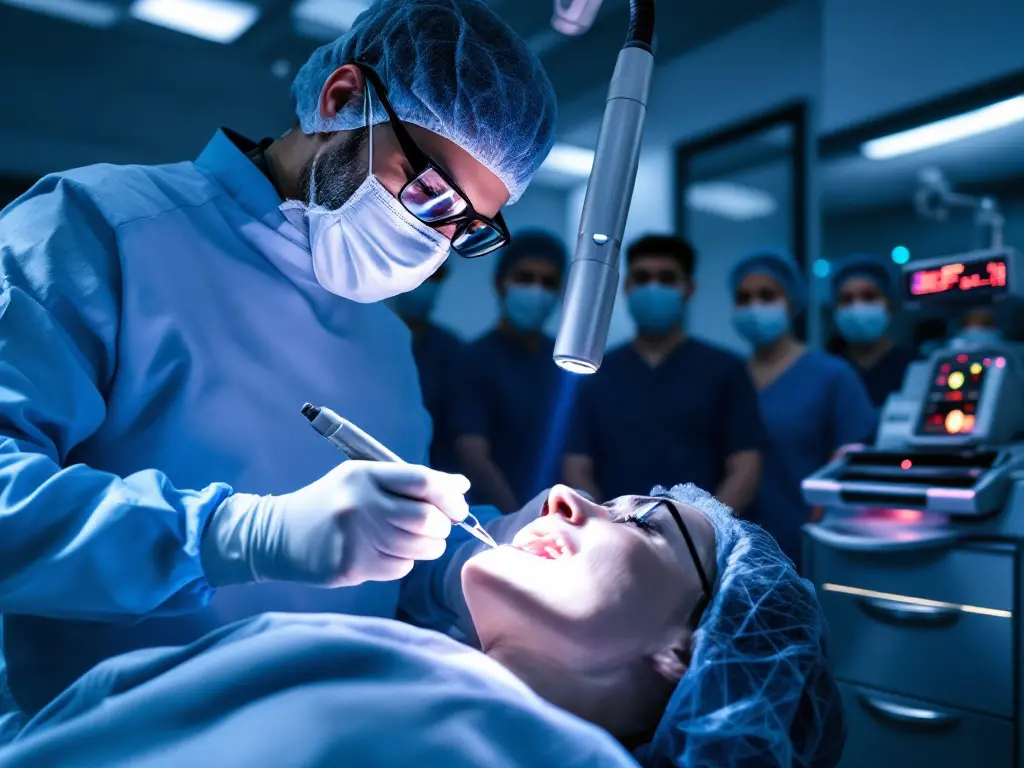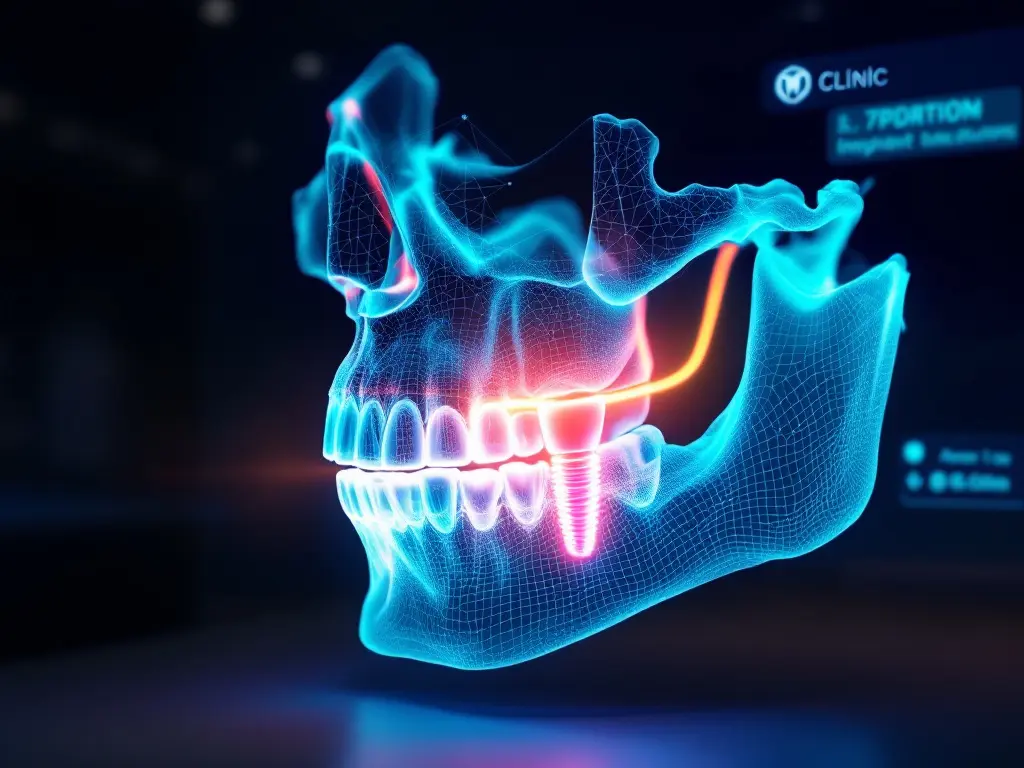Revolutionizing Dental Implants: Advancements in Laser-Assisted Implant Insertion
Dental implant technology has evolved significantly in recent years, with laser-assisted implant insertion emerging as a groundbreaking innovation. This technique is reshaping dental surgery by offering increased precision, minimized invasiveness, and faster recovery times. In this article, we’ll explore how lasers are transforming dental implant procedures, from pre-surgical planning to post-operative care.

1. Precision and Accuracy: A New Standard in Implant Placement
Laser technology has set a new benchmark in implant precision. 3D imaging combined with laser guidance allows dentists to map out the exact placement of implants before surgery. This digital approach creates a highly accurate surgical guide, ensuring that implants are positioned correctly for maximum stability.
Key Benefits:
- Reduced Surgical Errors: The risk of nerve damage or misalignment is minimized.
- Custom Fit Implants: Each implant is tailored to the patient’s unique oral anatomy.
- Long-Term Success: Proper placement ensures greater implant longevity.
Example in Action: A 2023 study from the Journal of Dental Implantology reported a 30% increase in implant success rates when guided by laser-based imaging technology.

2. Minimally Invasive Techniques: Less Trauma, Faster Healing
Traditional implant surgeries often involve significant cutting and stitching. In contrast, laser-assisted techniques create small, precise incisions, reducing trauma to surrounding tissues.
How It Works:
- Tissue Cauterization: Lasers simultaneously cut and cauterize tissue, leading to minimal bleeding.
- Reduced Need for Sutures: Smaller incisions often heal without stitches.
- Sterilization Effects: Lasers kill bacteria, lowering infection risks.
Clinical Insight: Research shows that patients undergoing laser-guided dental implant procedures experience 50% less post-operative swelling compared to those who undergo traditional surgery.

3. Enhanced Osseointegration: Stronger, More Stable Implants
Osseointegration is the process by which dental implants fuse with the jawbone, creating a secure foundation for artificial teeth. Laser technology accelerates this process by stimulating bone regeneration and encouraging the body’s natural healing response.
Key Advancements:
- Bone Stimulation: Lasers trigger cellular activity, enhancing bone density.
- Improved Implant Stability: Better bone growth leads to stronger implant integration.
Clinical Study Spotlight: In a recent trial published in the International Journal of Implant Dentistry, 80% of patients treated with laser-assisted implants experienced faster bone integration than those undergoing conventional procedures.
4. Faster Recovery Times: Get Back to Smiling Sooner
The minimally invasive nature of laser-guided implants results in shorter recovery times. With less swelling, reduced pain, and a decreased risk of complications, many patients return to normal activities much sooner.
What Patients Can Expect:
- Shorter Healing Period: Recovery can be cut by 25% to 40%, depending on the complexity of the procedure.
- Minimal Post-Surgical Pain: Many patients require fewer pain medications.
- Faster Aesthetic Results: Dental crowns can often be placed sooner due to quicker implant stabilization.

5. Real-Time Monitoring: A New Era of Precision Care
Advanced laser systems now feature real-time monitoring sensors, enabling instant feedback during surgery. These sensors alert dentists to potential issues such as infection, bone density changes, or implant misalignment.
Advantages for Patients:
- Early Detection of Complications: Reduces the risk of implant failure.
- Precision Adjustments: Surgeons can adapt their approach mid-procedure, ensuring optimal outcomes.
6. Comfort and Reduced Pain: A More Pleasant Experience
Many dental patients avoid implant procedures due to fear of pain. However, laser-assisted implant insertion is often less painful than traditional methods. The procedure requires less anesthesia and involves fewer invasive steps, creating a more comfortable experience overall.
Why It Works:
- Targeted Anesthesia: Many procedures can be performed with local anesthesia only.
- Minimized Nerve Irritation: Less tissue disruption means fewer post-op complications.

The Future of Laser-Guided Dental Implants
As dental technology continues to evolve, laser-assisted implant procedures will remain a cornerstone of modern implantology. From enhanced precision and faster healing to improved patient comfort, this advanced method is redefining the possibilities of dental care.
Whether you’re considering your first dental implant or exploring replacement options, laser-assisted technology offers a reliable, minimally invasive, and highly effective solution.
Would you like to learn more about advanced dental implant procedures? Contact a qualified dental specialist today to explore your options for a healthier, more confident smile.











